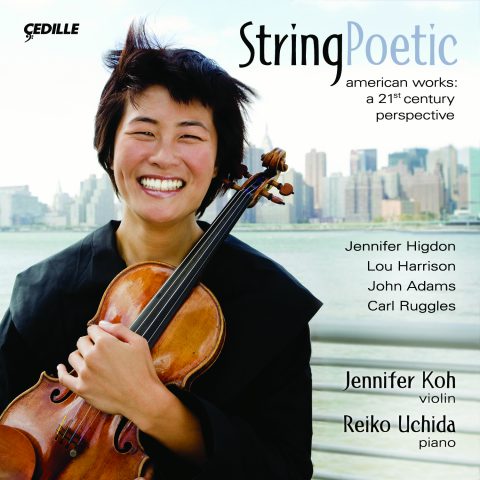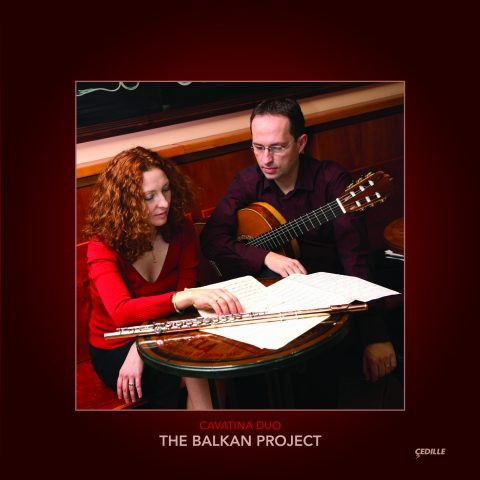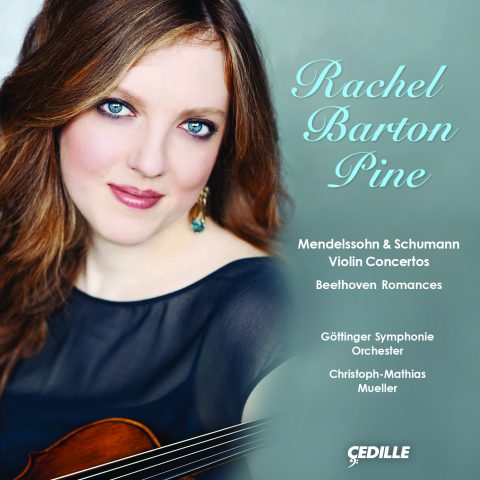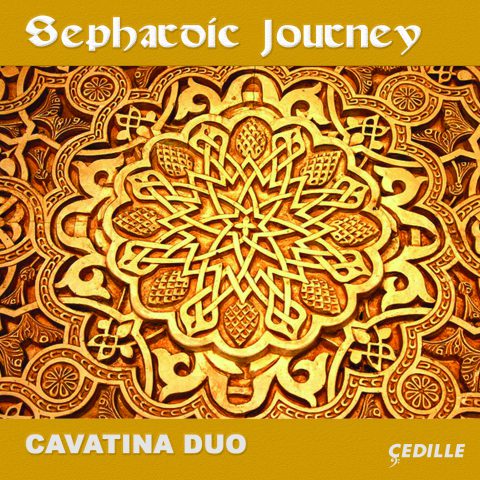| Subtotal | $18.00 |
|---|---|
| Tax | $1.85 |
| Total | $19.85 |
Store
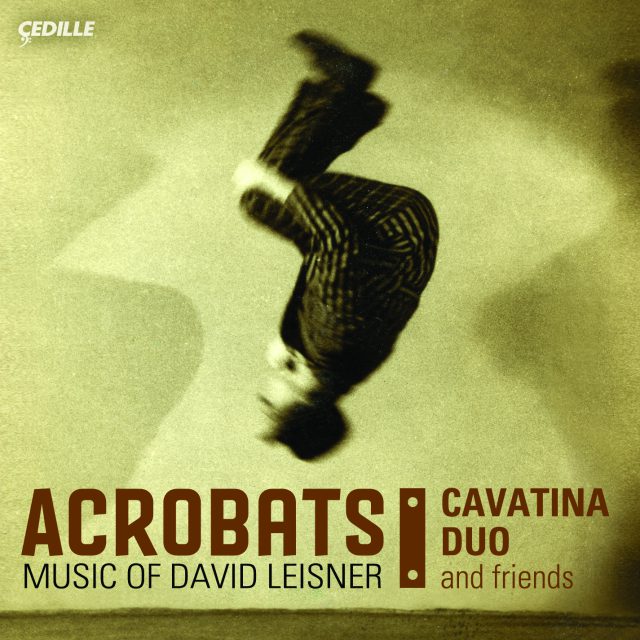
Store
Acrobats: Music of David Leisner
Denis Azabagić, Joshua Rubin, Katinka Kleijn, Eugenia Moliner
The assessments of David Leisner’s most celebrated work, Dances in the Madhouse, could apply to all the pieces on this CD of Leisner’s complete works for flute and guitar, all composed between 1982 and 2002.
The disc contains three world-premiere recordings, including the playful and haunting Acrobats; Trittico, inspired by Renaissance paintings; and Leisner’s exploration of contrasting personality types, Extremes.
In addition to Dances in the Madhouse, which is fast becoming a modern classic, the disc contains El Coco (The Bogeyman), inspired by a Francisco Goya print, and the aptly-named Nostalgia.
Making its Cedille Records debut, the Cavatina Duo has received widespread praise for its imaginative performances.
Preview Excerpts
Acrobats
Dances in the Madhouse
Trittico
Extremes
Artists
10: with Katinka Kleijn, cello
13: with Joshua Rubin, clarinet
Program Notes
Download Album BookletProgram Notes
Notes by David Leisner
One might consider the flute and guitar odd bedfellows. The generally bright, edgy presence of the flute would not appear to be a natural match for the mellower intimacy of the guitar. Yet, despite and maybe even because of these differences, the combination is popular among performers and composers. In fact, as a composer, I have often turned to this instrumentation and found it to be a source of great variety of color, mood, and expression.
This album contains my complete works to date for flute and guitar. It includes four duos and two trios, one with the addition of a clarinet, the other with cello. These pieces span exactly twenty years, from 1982 to 2002.
The featured performers are the world-class Cavatina Duo. A composer could not ask for more serious dedication and commitment, or more brilliant artistry than what Eugenia Moliner and Denis Azabagic provide here. From the very beginning of this project, they earnestly sought my coaching advice and responded with eagerness, openness, and always, in the end, originality. They also arranged for me to come supervise most of the recording sessions. In many cases, they play my music more beautifully than I imagined could be done. They are a composer’s dream.
ACROBATS
In Nathan Englander’s debut short story collection, For the Relief of Unbearable Urges, there is a story called ‘the Tumblers.’ In it, a group of Polish Jews during World War II is herded onto trains bound for the concentration camps, but instead, quite by chance, they board a train full of circus performers who are on a tour to entertain the Nazis. The story is set in an atmosphere where fateful decisions about life or death are made in an instant, by a nod of the head or the toss of a coin. Acrobats is set in the same atmosphere and begins where the short story ends: with the reluctant, disheveled performers about to go on stage, barely having a clue of what they are supposed to do, but knowing that their lives depend on it. The piece is not intended to be a narrative description of these moments, but rather an imagined evocation of the inner mental and emotional activity during them. In the first movement, “In the Wings,” the acrobats wait offstage with nervous anticipation, distracted by thoughts darting here and there – premonitions of themes of the second and third movements. This is interrupted by a “Flashback,” the middle movement, a sudden memory of the pain, struggle, and near-death that have brought them to this moment. The performers finally go “Up in the Air” in the final movement, twisting, flipping, and soaring in all manner of risky acrobatics. Just before the end, the guitar remembers an old Yiddish folk song, “Oyfn Pripetshik,” a recollection of deep Jewish roots in a contemporary world of assimilation. The piece concludes with a return to the precarious acrobatics.
Acrobats was completed in 2002 and dedicated to my exceptional guitar student at the time, Luiz Mantovani.
EL COCO
In “Que viene el Coco” (Here comes the bogeyman), a Francisco Goya print in the Los Caprichos series, a cloaked and hooded bogeyman scarily approaches two frightened little girls who seek refuge in their mother. One might also see the image as the strong overpowering the weak, male intimidating female, dark overcoming light, age (or death) menacing youth.
The musical piece, El Coco, is a passacaglia whose recurrent bass theme is played almost exclusively by the guitar. It is the bogeyman, or any of its alter egos. At first, the flute takes on the frightened character of the children, in nervous little fragments. The piece climaxes as these fragments coalesce into the strong, long-lined melody of the protective mother. At the end, the two instruments tentatively exchange roles, and the music disappears, as if to ask, was this a dream or reality?
El Coco was commissioned by Red Cedar Chamber Music, as part of their “Artistic Celebration for the 21st Century” project and written in 1999. Flutist Jan Boland and guitarist John Dowdall commissioned seven composers each to write a work of about 3 minutes in length, 21 minutes of music for the 21st century, each inspired by a work of visual art from the permanent collection of the Cedar Rapids Museum of Art in Iowa. The seven works were premiered at the museum in 2000, with the seven art works on display.
NOSTALGIA
Originally the third movement of my Sonata for violin and guitar (1985), which was commissioned by Clayton Haslop and Jack Sanders, Nostalgia was divorced from that piece (an amicable settlement on both sides) and made to live on its own as a short, single-movement work. While the rest of the Sonata was written specifically for violin, Nostalgia may be played on either violin or flute. The piece is, by turns, cozy, passionate, sweet and, of course, nostalgic, and its form is a simple A-B-A. A guitar solo provides the transition between the A and B sections, while the flute solo converses with itself as it interrupts the long-arched phrases of the B section, and appears before the recapitulation of A.
DANCES IN THE MADHOUSE
Commissioned by and dedicated to the Californian guitarist, John Schneider, Dances in the Madhouse was written in 1982. Originally for violin and guitar, it was composed with the flute in mind as an alternative. I also arranged it for orchestra in 1989. The inspiration for this piece was a lithograph by the early 20th-century American, George Bellows, called “Dance in a Madhouse.” In it, four groups of asylum inmates are highlighted, and I wrote a dance for each of them. ‘tango Solitaire’ is for the woman dancing a stylish dance, alone. “Waltz for the Old Folks” is for a happy couple who seem perfectly comfortable with their insanity. A forlorn, despairing couple of women, sitting on the sidelines, prompted “Ballad for the Lonely.” And ‘samba!’ is for the middle-aged couple performing a wild, dizzy dance.
TRITTICO
Commissioned by and dedicated to James Smith, Los Angeles-based guitarist and guitar department chair at the University of Southern California, Trittico was composed in 1985 and revised in 2002. A triptych is a form of painting common in the Renaissance period, with three panels, often hinged at the sides, usually with the two outer, smaller panels subordinate to the large one in the middle. They were often used as altarpieces.
For some irrational, yet explicit reason, the abstract music of Trittico feels Italian to me;hence, the Italian title and markings. The central movement is an emotionally elaborate rhapsody, with solo passages for both cello and guitar, while the outer movements are light and airy.
EXTREMES
Unlike many of my instrumental works, which take their inspiration from visual art or a literary source, this trio is an abstract piece. In two movements of equal length, it is an exploration of opposites. The first movement is marked “introverted.” It is chromatic and dark, and constantly turns in on itself, in both melody and gesture. The clarinet introduces the main theme at the beginning, and the flute announces the second theme at a slightly faster tempo. While the guitar mostly accompanies the contrapuntal discussions of the flute and clarinet, it states the first theme as a soloist early on and takes up the second theme toward the end of the movement in an eerie, high tremolo.
The second movement, marked “extroverted,” is another matter entirely. Mostly diatonic and wide-open, emotionally as well as harmonically, it has the energy and rhythmic intensity of rock music. This movement is in what I’d call a spiral rondo form: Each refrain consists of two ‘sentences’ (made of several phrases); every time the refrain returns, it begins with the second sentence of the previous refrain and then introduces a new sentence, which becomes the first sentence of the next refrain, and so on. The theme of the refrain, always played by flute and clarinet, is a spiraling figure itself, beginning with a short phrase, then repeating and elongating it until it spins out into a larger phrase. Written in 1987, this work was commissioned by the Scarborough Chamber Players in Boston.
DAVID LEISNER is an extraordinarily versatile musician with a distinguished career as a guitarist, composer, and teacher. As a composer, Leisner is noted for the emotional and dramatic power of his music, which is widely performed. His most celebrated work, Dances in the Madhouse, has received hundreds of performances.
Leisner’s music has been performed worldwide by such prominent musicians and ensembles as Sanford Sylvan, Paul Sperry, Eugenia Zukerman, Juliana Gondek, Susan Narucki, D’Anna Fortunato, and Benjamin Verdery; the St. Lawrence String Quartet, Los Angeles Guitar Quartet, and Cavatina Duo; and orchestras throughout the United States. Leisner’s music may be found on CD on the Sony, Dorian, Centaur, Town Hall, Signum, Acoustic Music, ABC, Athena, Fleur de Son, and Barking Dog labels.
David Leisner has received composition grants from the American Music Center, Alice M. Ditson Fund, New England Foundation for the Arts, and Meet the Composer. He also maintains a busy career as a concert guitarist, performing in recital and as a soloist with orchestras around the world. A winner of top prizes at international guitar competitions in Geneva and Toronto, he is a featured solo artist for Azica Records and has also recorded on the Telarc, Koch, Etcetera, and Naxos labels. David Leisner is currently the co-chair of the guitar department at the Manhattan School of Music.
For further information: davidleisner.com
Album Details
Total Time: 60:08
Producer: James Ginsburg
Engineer: Bill Maylone
Graphic Design: Melanie Germond
Recorded: May 23-25, August 31 (Extremes), and November 18 (Trittico), 2006 at WFMT Chicago
Publishers:
Acrobats
©2006 Les Editions Doberman-Yppan
El Coco ©2000 Merion Music, Inc.*
Nostalgia ©1999 Merion Music, Inc.*
Dances in the Madhouse
©1987 Merion Music, Inc.*
Trittico
©2002 Les Éditions Doberman-Yppan
Extremes
©2002 Les Éditions Doberman-Yppan
*Theodore Presser Co., Sole Representative
©2007 Cedille Records/Cedille Chicago
CDR 90000 096
